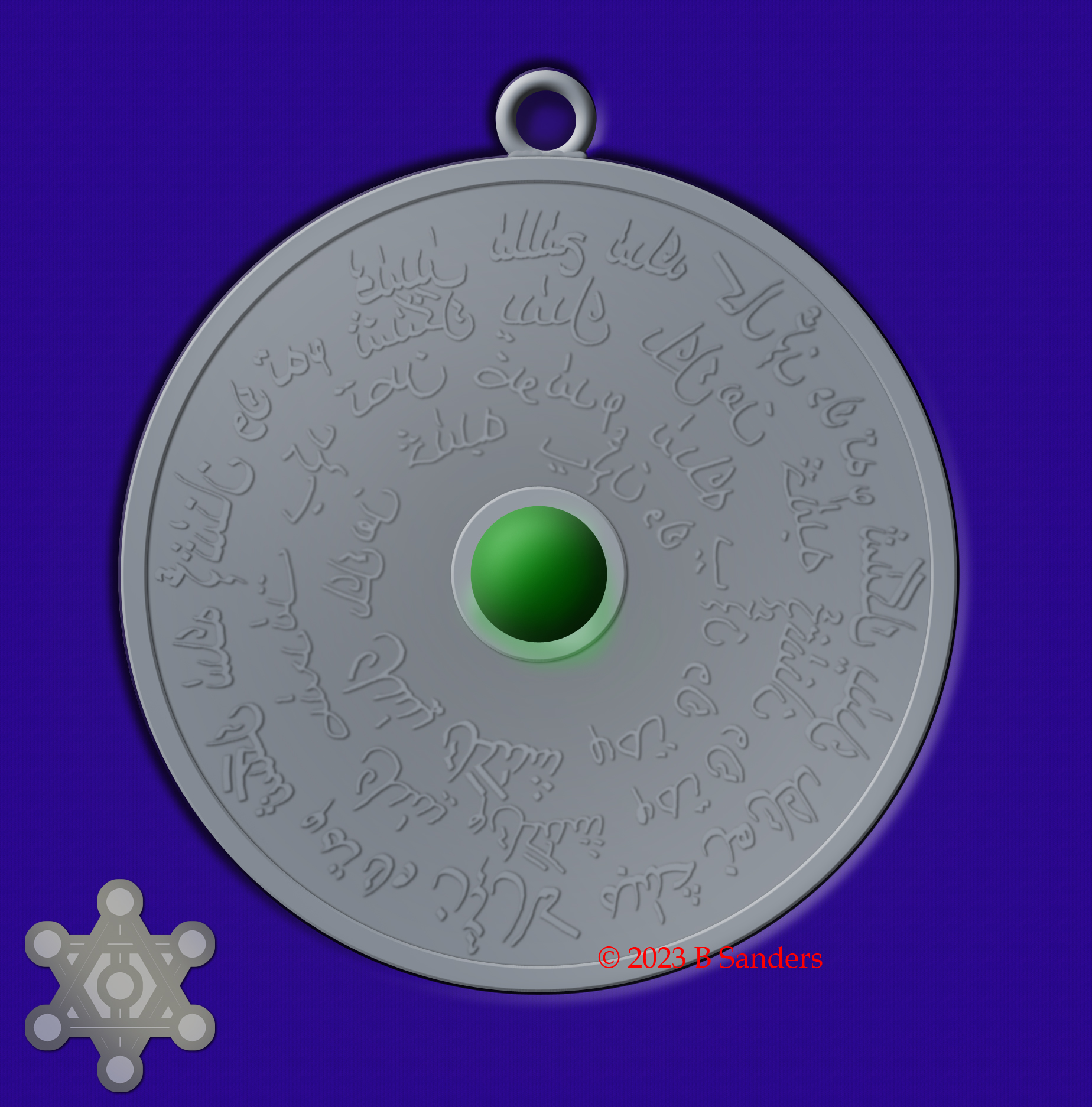@Thorvald: Sandy. She was one of the stories I first started writing way back. Her characters are a large collection of individuals from different parts of the world. Two of her major characters are Muslim, one from Egypt and one from Iraq, and some of her supporting characters are Djinn brought to the Human world to assist the main characters. The spike in developing Djinn culture started last year when I developed two languages for the Djinn: the regular Djinn language I'sadh and the Afarit language Jezbud. As I put more work into their languages (mostly Jezbud), I started asking questions about what kind of culture they would have. Since the Qur'an teaches that a Djinni is almost a parallel being to a human, including their capacity to convert Islam, I started focusing on the religious aspects of their society and created parallels to real-world Muslim religious organization. I am also a big fan of calligraphy and have been inspired by Arabic and Islamic calligraphy to design different emblems and other works to flesh out how both their language and art works. I have also been recently learning elementary Farsi for my own amusement. Things just kind of took off from there.

Afarit Travel Pendant (c. 1840) by @fragmented_imagination (B Sanders)
Vaya Allax añu kaelän we tu, chaxe yañ ñeun jabu kaelän we tu, chaxe añu äpanaen we tu, chaxe yañ ñeun jabu äpanaen we tu, chaxe, yañ saudat bid tsn dwad, añu yän we tu, chaxe yañ ñeun jabu yän we.
“O Allah, preserve me, and preserve the things with me, and protect me, and protect the things with me, and, with your fine and excellent message, send me, and send the things with me.”
An Islamic travel pendant bearing a du'a' (a prayer of supplication or invocation) in Jezbud. This pendant was stamped during a time where it was staunchly believed that one only secured the blessings of Allah by using a die that was inscribed with a hand-written du'a' or ayat (passage from the Qur'an), which the owner would then recite. However, by the 1970s, many manufacturers of such trinkets had abandoned using a master hub with handwriting in favor of sculpting printed text formatted to fit the pendant. This made the text easier to read. Because green is considered a representative color of Islam, pendants such as this often contain a small emerald. The opposite of this particular pendant is blank; later designs would feature a date on the back and sometimes even an engraving of the name of the original recipient. Trinkets such as these were often kept so that the du'a' could be recited with accuracy by young Muslims. As the years went on, Djinn Muslims started behaving as if these were imbued with blessing and would wear them instead of reciting the du'a' (often to the consternation of the local imam who saw them, resulting in a religious butt-chewing for not reciting the du'a'). The above du'a' is a direct translation from an Arabic du'a' asking for safety in one's journey. Such pendants were often oriented with "Allah" as the topmost word when worn.
© 2023 B Sanders
Comments & Critiques (5)
Preferred comment/critique type for this content: Any Kind
@fragmented_imagination: Noice. You're aware of my foibles in roundtable alt-hist gaming, but I've always been intimidated playing what-if whole cloth outside of immediate contexts, since while broad-strokes history is fairly flexible in terms of systems theory, the little details are dependent on such a precise sequence of steps that projecting even just five years into the future becomes a total crapshoot. :p
@Thorvald: I would imagine trying to play with such minute details can be quite a challenge to a game. I took a look at The East is Red, and I can see that constantly being on top of these details makes for an interesting alt-history but could easily wear out the players. Between looking at The East is Red and your comments regarding railroading an alt-history, I find that I'm a little intimidated by the amount of details going into the broad history I've already developed. What I have revealed of my universe on Side 7 is only a small fraction of the notes and materials I've developed over two decades, and it's making me question if it all fits together. Your broad strokes style makes it easier to advance the game at a reasonable pace, and, between the two, I think it makes your game more interesting to watch. Too many details can slow things down.
I appreciate the remarks. I receive so little feedback about my universe that it's always a thrill to get some commentary on it, and I love how it helps me refine some of the ideas I've put out there.
@fragmented_imagination: The upshot, of course, is this same uncertainty principle provides a flexible margin of error to account for the little blips, eg. even if Hitler died on the front, the Völkische movement would have been taken up by someone else—imagine how even more bats–t insane Nazism would be if Himmler was running the show. "Pure" fantasy's typically been given a lot more leeway for its flagrant errors only because there's no ready historical record to pair it against: just because Middle-earth is mapped back to front, doesn't mean Tolkien wasn't also grinding an axe.
tl;dr don't play choo-choo and you should be fine. :P
If correspondence with my erstwhile colleague CivGeneral is any evidence, I'm a great sounding board for worldbuilding. S'just a shame he completely dropped off the project before we got to the really juicy ideas. :B



As someone that got insanely deep into modern Persian history one year essentially on a whim, I must ask: What inspired all this in the first place?